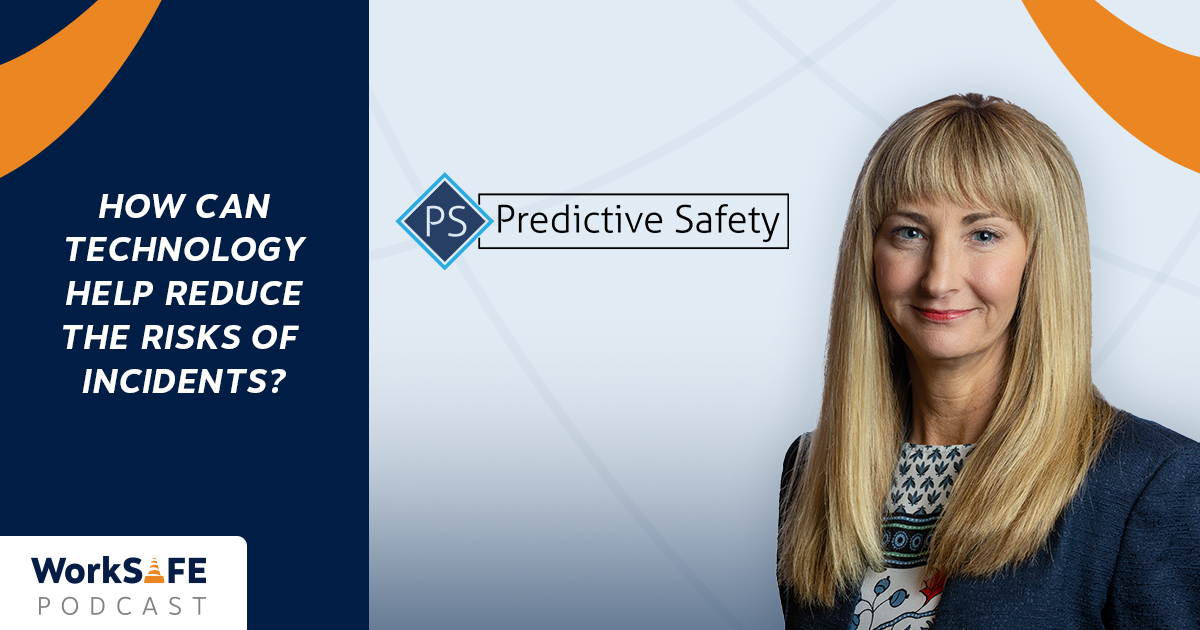Millions of insomniacs, Netflix bingers, and parents with loud babies report to work every day.
We see them everywhere. They’re the ones huffing and puffing as loudly as possible at any minor inconvenience, such as a lapdog yelping next door or a coworker crunching noisily on their chips. With maybe a few hours of low-quality sleep in them, they’re easily distracted and forget why they entered a room immediately upon entering it. They’re irritable. They mutter a few more cuss words than usual, dismissing regular filters and inhibitions.
In some industries, sleep-deprived workers stand out even more because they’re the ones causing costly, disastrous accidents. According to the National Safety Council, “A typical employer with 1,000 employees can expect to experience more than $1 million lost each year to fatigue: $272,000 due to absenteeism and $776,000 due to presenteeism. An additional $536,000 in healthcare costs could be avoided with optimization of sleep health.”
So, to really drive that point home, here’s 5 of the most disastrous accidents in history caused (in part) by sleepy people:
1. American Airlines Flight 1420 Crash
It was nearly midnight on June 1, 1999 when American Airlines Flight 1420 overshot the runway at Little Rock National Airport. 10 passengers and the captain were killed, and at least a hundred others were injured. Investigators from the National Transportation Safety Board reported that the pilots may have made the mistake because they were tired and under additional stress while trying to land the plane during the thunderstorm. “On the basis of the evidence, staff believes fatigue was a factor in this accident,” said Evan Byrne, chairman of the group that investigated the pilots’ actions.
It was nearly midnight on June 1, 1999 when American Airlines Flight 1420 overshot the runway at Little Rock National Airport. 10 passengers and the captain were killed, and at least a hundred others were injured. Investigators from the National Transportation Safety Board reported that the pilots may have made the mistake because they were tired and under additional stress while trying to land the plane during the thunderstorm. “On the basis of the evidence, staff believes fatigue was a factor in this accident,” said Evan Byrne, chairman of the group that investigated the pilots’ actions.
2. The Challenger Explosion
Seconds after its launch in January 1986, the Challenger space shuttle exploded. A leak in the fuel tank caused it to collapse, and the orbiter was pulled apart. The pieces, and the crew within, continued upwards to reach an altitude of 65,000 feet before falling into the Atlantic Ocean. All seven crew members died, presumably due to loss of cabin pressure and oxygen deficiency. A 1988 report stated that managers involved in the launch had slept only two hours the night before. The report also noted, “working excessive hours, while admirable, raises serious questions when it jeopardizes job performance, particularly when critical management decisions are at stake.”
3. The Exxon Valdez Oil Spill
At 12:04 a.m. on March 24, 1989, the Exxon Valdez supertanker struck Bligh Reef. 11 million gallons of crude oil spilled into the water, covering 1,300 miles of coastline. It killed an estimated 250,000 sea birds, 3,000 otters, 300 seals, 250 bald eagles and 22 killer whales. According to investigations, Captain Hazelwood was under the influence of alcohol and asleep at the time of the accident, and the Third Mate who took over for him at the helm was also sleep-deprived. According to Anchorage Daily News, the crew had just put in a 22-hour shift loading the oil onto the ship, and the Third Mate had reportedly only had a “catnap” in the last 16 hours leading up to the crash. Exxon paid nearly $4 billion for habitat restoration and clean-up.
4. Three Mile Island
Between 4 and 6 a.m. on March 28, 1979, the most serious nuclear incident on US soil took place. Workers neglected to notice that the plant was losing coolant, causing the plant’s core to overheat and partially melt. There were no deaths, and the building contained most of the radiation released. However, some cases of thyroid cancer in those who lived near the area at the time are thought to be linked to radiation from the accident. Investigators later ruled that sleep deprivation was a significant factor behind the accident.
5. Chernobyl
It was 1:23 a.m. on April 26, 1986, when the nuclear power plant in Chernobyl, Ukraine, exploded. 31 people died immediately, and an additional 4,000 are estimated to die due to radiation exposure and cancer. The disaster prompted the evacuation of nearly 200,000 people and left the entire city a ghost town. In addition to the flawed reactor design, human error linked to fatigue and 13-hr long shifts were investigated as contributing factors.
All 5 of these accidents happened late at night.
Coincidence? I think not!
Coupled with the fact that the majority of those in charge at the time of the accidents were also nearing the end of 12+ hour shifts, the rising levels of melatonin as they worked into the night probably made sleep irresistible.
Even when managing to stay awake, sleep deprivation itself is often just as dangerous as actually falling asleep on the job:
“We discovered that starving the body of sleep also robs neurons of the ability to function properly,” senior study author Dr. Itzhak Fried, a professor of neurosurgery at the University of California, Los Angeles (UCLA), said in a statement. “This paves the way for cognitive lapses in how we perceive and react to the world around us.“ (Science Daily)
So, if you’re a night-shift worker (or the manager of night-shift workers), here are some tips to keep you healthy, functional, and not destroying your workplace:
- Limit night shifts, and try not to work too many in a row.
- Avoid frequently rotating shifts. Stick with either night shifts or day shifts. If you can’t, it’s easier to rotate from a day to night shift than vice versa.
- Take a warm bath or listen to relaxing music after work.
- Eat at the same time every day of the week. Having a set eating schedule will help maintain the body’s clock.
- Save sweets for the end of your shift so you don’t crash until you get home.
- Avoid alcohol and caffeine before bed. (You already knew that one.)
- Avoid bright light at the end of your shift. Wear sunglasses and a hat to block light on your way home.
- Use blinds or heavy curtains to block sunlight when you sleep during the day.
- Keep the temperature in your bedroom cool–between 64 and 66 degrees Fahrenheit.
- Eat something when you get home. A glass of milk or dairy products with low sugar can help you fall asleep as they contain an amino acid that aids in serotonin and melatonin regulation.
- Block out noises with earplugs or plug in a fan for some electrical white noise. If you prefer to fall asleep to the sound of rain or the ocean’s waves, you may consider a white noise machine or mobile app.
- Save exercise for after you sleep, before you work. Because strenuous exercise produces stress hormones like cortisol and norepinephrine, your body may have difficulty falling asleep if you work out before bed.
- Avoid prolonged use of sleeping pills and sedatives, and talk to your doctor before making any decisions that further confuse your natural circadian system.
Got any more tips for night-shift workers? Share them in the comments below, please! What works for you may help someone else out tremendously, especially if they’re just adjusting to the new schedule.
Everyone else, learn more about how getting enough sleep alters your daily brain and cognitive functions here.
If you’re the manager of night-shift workers, consider investing in a fatigue and alertness assessment system for your employees. We also recommend that you check out AlertMeter. Partially funded by OSHA, it helps employees identify potentially dangerous fatigue symptoms so they can be managed and alleviated before causing costly and harmful accidents.
“I used AlertMeter® on an underground project and it was a great pre-shift fitness for duty tool. . . . Once the alert was given, the employee and the safety supervisor would meet and have a discussion to determine their fitness or level of alertness.” – Tony Turcotte, CMSP: MineWorx, LLC
Sources:
https://www.webmd.com/sleep-disorders/features/night-shift-sleep#1
https://history.nasa.gov/rogersrep/v2appg.htm
https://www.genesishealth.com/care-treatment/neuroscience/sleep/patient-resources/shift_workers/
https://www.nsc.org/work-safety/safety-topics/fatigue/cost
https://www.history.com/news/5-things-you-might-not-know-about-the-challenger-shuttle-disaster
https://www.nature.com/news/exxon-valdez-laid-to-rest-1.11141
https://www.ncbi.nlm.nih.gov/pmc/articles/PMC2517096/
https://www.washingtonpost.com/archive/politics/2001/10/24/pilots-error-blamed-for-1999-plane-crash/35fe7bc6-81c7-45a7-a40e-54633d9e12a7/
https://www.sciencedaily.com/releases/2017/11/171106112312.html
Safer, More Productive Shifts Can Start Today
Request a no-obligation Discovery Meeting, and a member of our team of fatigue-risk mitigation experts will walk you through this revolutionary technology so you can run safer, more productive shifts.
Fill out the form below, and we'll follow up to:
- Ask a few additional questions about your situation
- Understand your scope and timeline
- Determine if there's a good fit
- Schedule your Discovery Meeting
"*" indicates required fields











